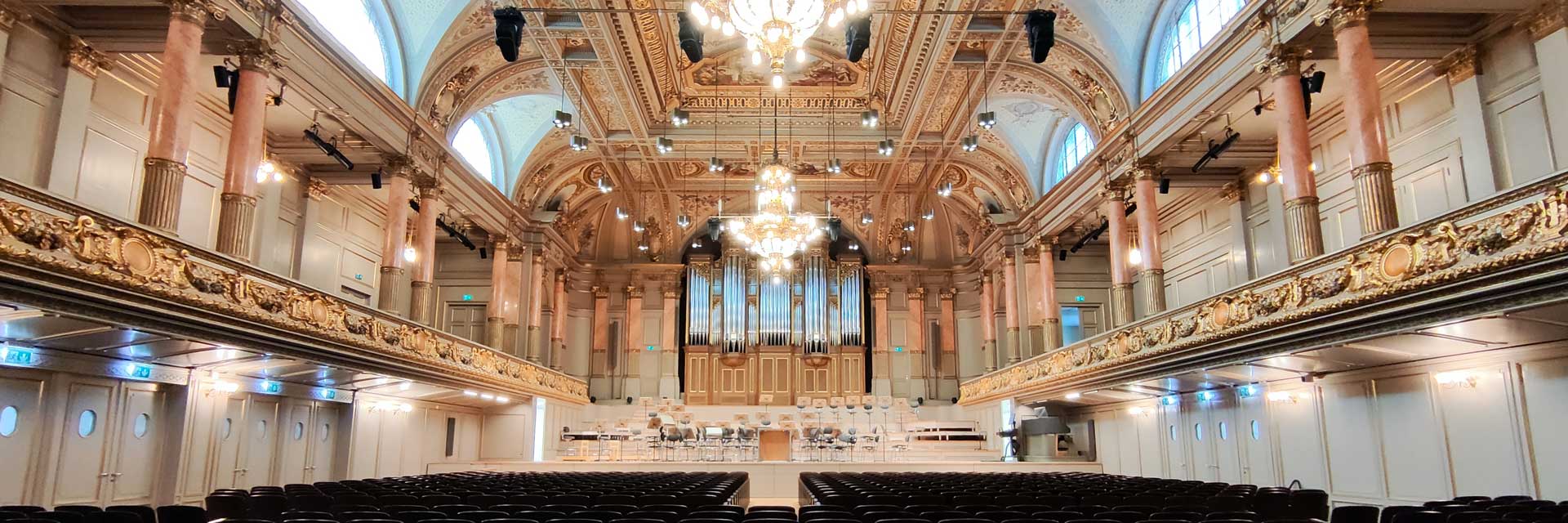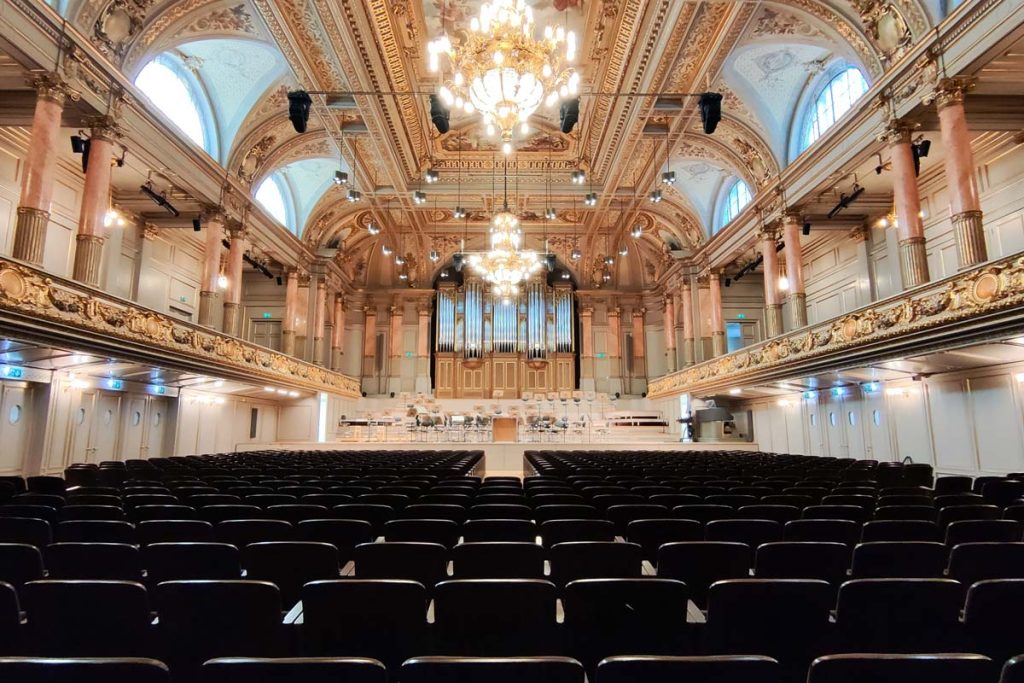Professional musician Stefan Gawlick travels the world and knows almost every major concert hall around the globe. In this series, he reports on the acoustics and other characteristics of famous venues both in the auditorium and on stage.
I experienced it in the Berlin Philharmonie in the early 1990s, and I missed it in David Geffen Hall (formerly Avery Fisher Hall) in New York, but hope to catch up sometime.
Fortunately, I was there in Zurich now: I was able to experience a hall before and after renovation, which often enough amounts to a veritable rebuilding. Even if the hall looks exactly the same after the construction work, the sound often changes massively, because innocuous things like a different support system for the stage structures and the change from one type of wood to another for the supports can completely change the acoustic conditions.
The Tonhalle in Zurich is famous, among other qualities, for its almost unbelievably beautiful handling of low frequencies. Four double basses sound like six, yet no definition is lost; all instruments radiating low notes are refined in an indescribably organic and benevolent way while maintaining all clarity. This is due in large part, as I was able to see when I visited the site, to the way the stage is constructed. While in most halls the stage is set off from the stalls of the auditorium by means of a wall, here the floor goes through and the stage stands on it like a mobile platform construction. Of course, it is disproportionately more massive and is so visually disguised that it is not noticeable, but in the end it is essentially the same thing. Climbing around in this framework of beams under the stage steps is already a special experience, but it is nothing that is really relevant for us music lovers.
A few months ago, I was given the chance to record a concert in the Tonhalle Zurich as a sound engineer, and since then this hall has not let me go. Admittedly, my following words are exaggerated, but they certainly show clearly where the journey is heading: in this hall, you can simply send an orchestra somewhere on stage and just haphazardly toss a couple of mics in with them – the recording will turn out good.
I recorded a large symphony orchestra residing there, and first miked the stage as usual with lots of props in all the vocal groups. After a relatively short mixing process, I was left with: the main mics, a stereo prop in front of the woodwinds, some timpani, a touch of double bass for more consonants. Done.
What flows from the speakers with such a minimal setup is acoustic manna, sonic bliss! Fullness, delineation, dynamic range, depth in imaging … all there and in abundance. And how this hall manages to alloy 16 violins into a sounding whole from which one can no longer extract a single opinion – a dream.
The fact that the Tonhalle now sounds minimally lighter than before the reconstruction is really no harm, since before it could sometimes become too much of a beauty. The fact that this hall is also home to one of the best stage teams in the world makes every job in Zurich a pure joy.
Music tips – Recordings conveying the venue’s sound signature
There are no CDs from the new Tonhalle Zurich yet, but the Tonhalle Orchestra is busy recording, so it’s only a matter of time before we get to enjoy this acoustic at home.


